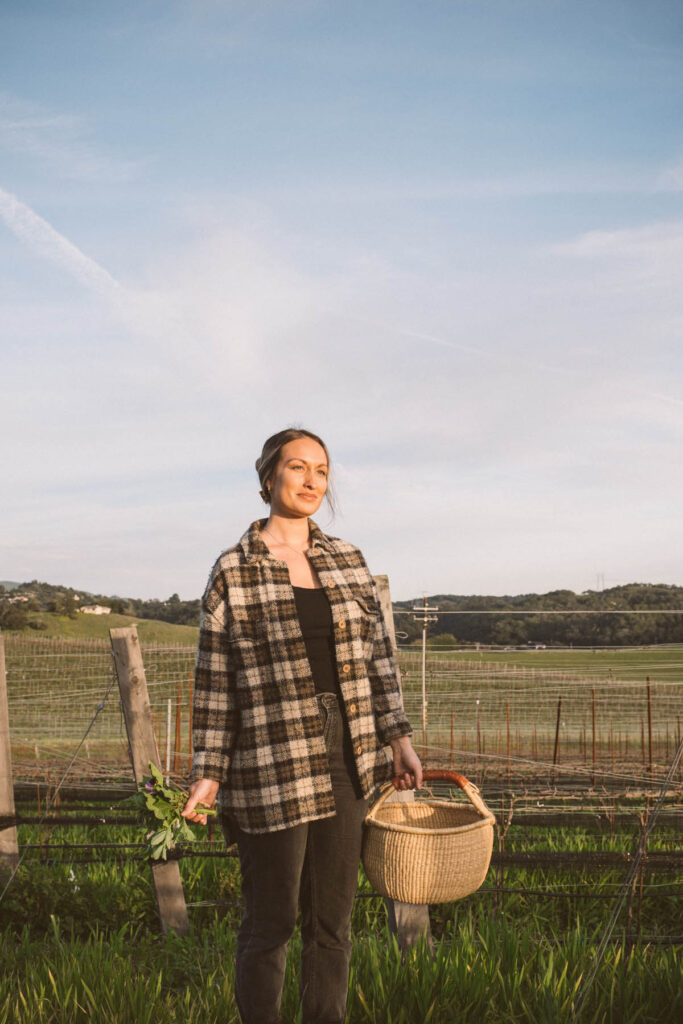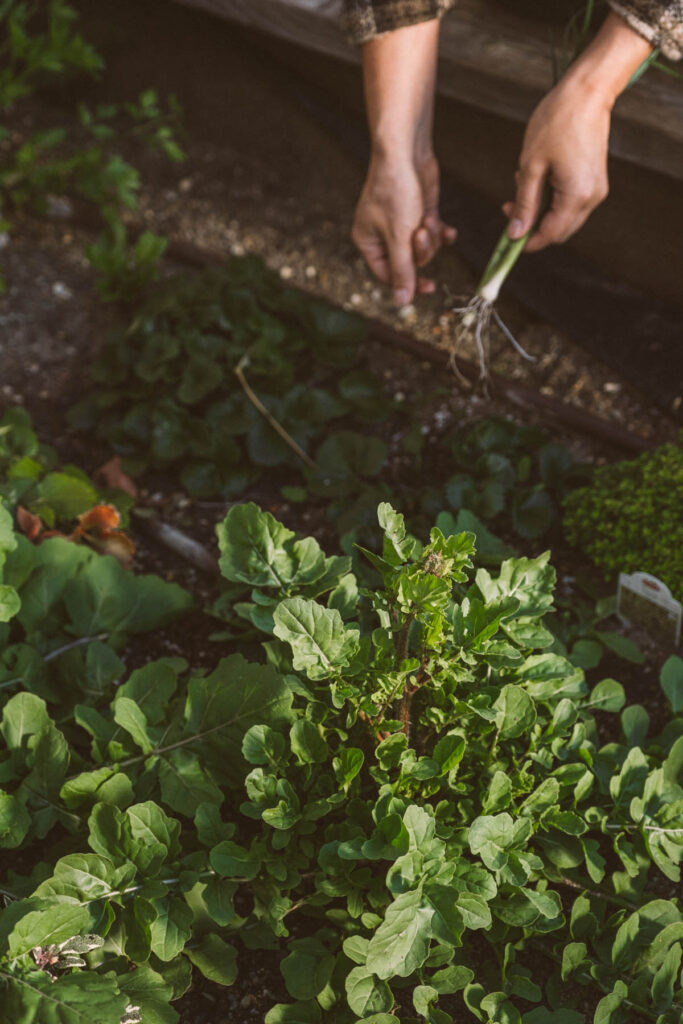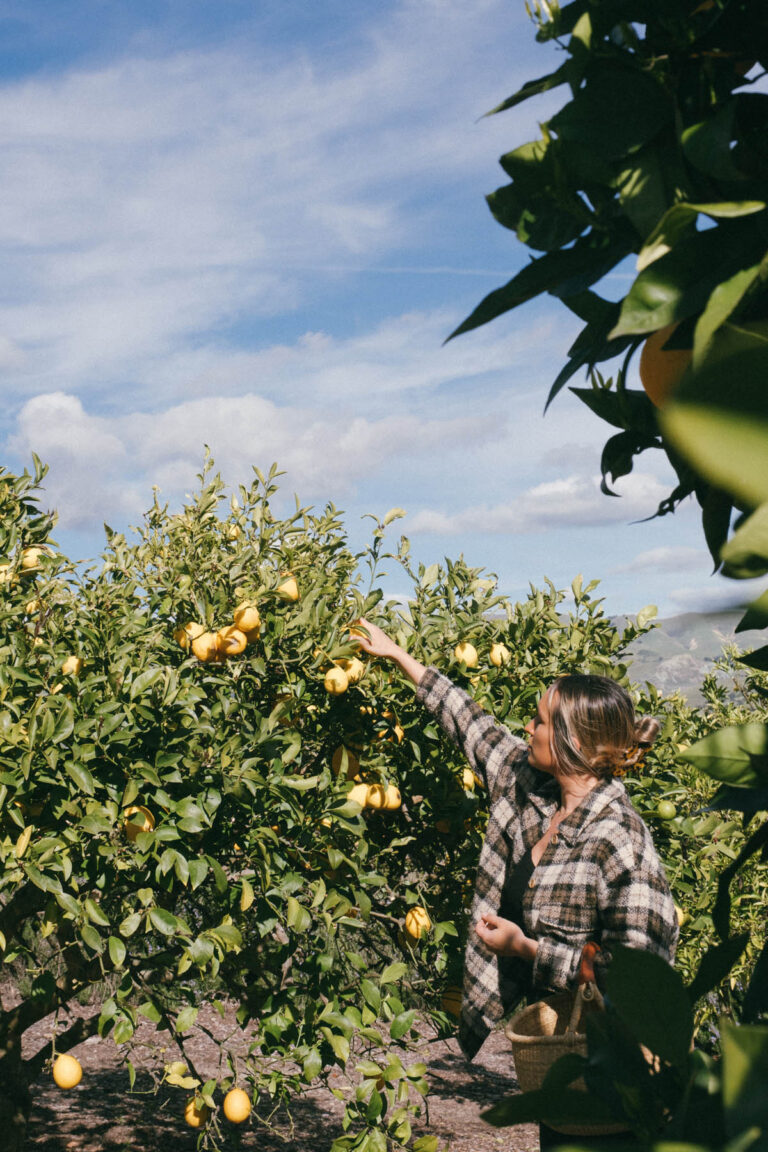
Regenerative Agriculture: Big Words, Simple Concepts
Story by Katy Budge
Photography by Richard Fusillo
Mention of the term “regenerative agriculture” is often met with a blank stare. But the idea behind these unwieldy buzz words is very straightforward: it’s a method of farming that involves collaborating with the soil, with Mother Nature.
Cultivating the soil through regenerative agriculture involves several time-honored methods, such as using cover crops and composting. And, the practice can be applied on any scale, from backyard gardens to large acreage.


Seeding Between the Vines
Who knew a discussion with Nathan Carlson about regenerative agriculture would turn into a salad bar experience?
Carlson, the Winemaker and General Manager of Center of Effort Wines (COE) in San Luis Obispo, employs cover crops in his vineyard. Hidden in plain sight, these lush plants grow between the rows of vines, especially in springtime.
A tour of the scenic COE vineyards permits the occasional sampling of some of these cover crops: pea shoots, malva leaves and bean sprouts. It turns out that what nourishes the soil nourished us as well, and that circle is what regenerative agriculture is all about. “We feed the soil, and let the soil feed the vines,” says Nathan. They, in turn, feed us.

Cover crops often include legumes, such as peas and beans. As many home gardeners know, these specialized plants provide nitrogen to the soil, which reduces — or even eliminates — the need for fertilizers. Other cover crop plants help crowd out noxious weeds, and provide nutritious biomass when tilled into the soil later in the growing season.
Another important function of cover crops is holding soil in place. This element of erosion control proved crucial during the barrage of torrential rainstorms that slammed California in the recent winter. Vineyards with cover crops, including COE’s, held up remarkably well during the heavy rains.
Nathan estimates that Center of Effort has approximately 80 acres of cover crops planted on its vineyards, swales and slopes. Imagine all the topsoil retained just on that one property alone. Now, consider the countless acres of vineyards with cover crops. That translates to a lot of dirt being held in place during the atmospheric rivers, all because soil health was made a priority.
Small Choices, Big Impacts
In Santa Margarita, one couple’s desire to practice regenerative agriculture led to them acquiring a local market.
In 2016, Zach and Shannon Joesting with daughter, Madison, found their dream home in bucolic Santa Margarita. Located on 12 acres, the property was ideal for practicing methods of regenerative agriculture, so the family launched into what Shannon half-jokingly calls “extreme hobbying.”
Specifically, the Joestings were interested in how soil restoration efforts worked for carbon sequestration. That’s another cumbersome phrase that describes a simple concept: capturing and keeping carbon dioxide in the soil. Even when done on a small scale, this helps reduce global warming.
While balancing the demands of their full-time tech jobs, Zach and Shannon began experimenting with several methods of regenerative agriculture. Among the more successful was the whimsical sounding “lasagna composting.” As the name implies, it involves layering materials such as cardboard, manure, plant matter and topsoil. The compost suppresses weeds and nourishes the soil. The result is a very healthy garden.

As they embarked on this rural lifestyle, the Joestings began meeting their Santa Margarita neighbors. Many of them were farmers, ranchers and other producers, “so we starting having a strong passion to support our local food community,” Shannon recalls.
They thought of starting a market, but Erin Inglish beat them to it by opening Caliwala Market in 2019. The Santa Margarita store catered to locals, providing what the community wanted to buy, and often showcasing what it had to sell.
Happy that such an effort had been realized, the Joestings became regular and enthusiastic customers. In fact, it was on a visit to the store in 2022 that they found out Erin was looking for new owners.
The family jumped at the chance. “This place has such a good energy about it,” Zach observed. “It’s a great feeling to be here.”


Now dubbed Margarita Market, the store continues its community-based concept. “We’re keeping the staple grocery items, because that has been a big request from the regulars,” Shannon explains. Customers can also find organic, vegan and gluten-free items, as well as local produce and products.
Though they’ve shifted some of their efforts from agriculture to the grocery business, the Joestings are still very focused on walking their talk. As the Margarita Market’s website notes, “We believe that the world needs us — all of us — to take action every day that supports regeneration of our environment. Making conscientious choices about where you purchase your food and what products you choose is one of the most impactful steps you can take.”
Indeed, if the concepts of regenerative agriculture are to collaborate, and to nourish what nourishes you and your community, then Margarita Market is a perfect example.


